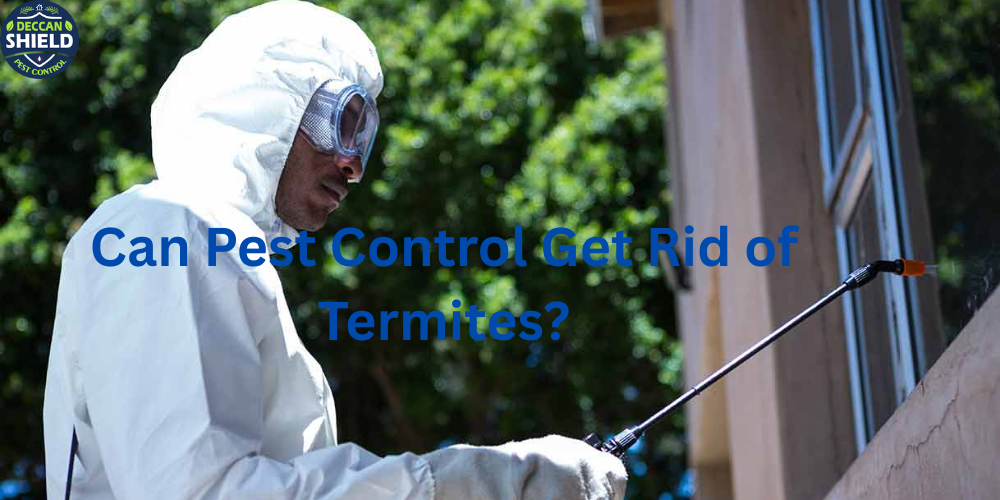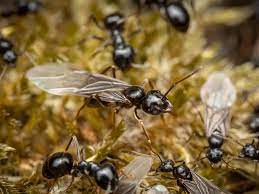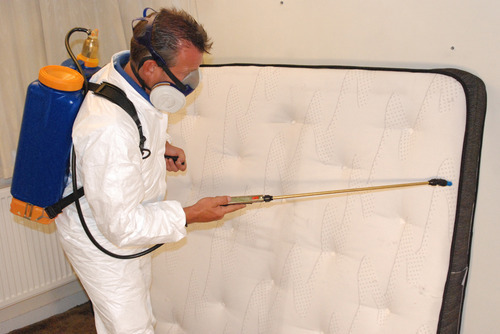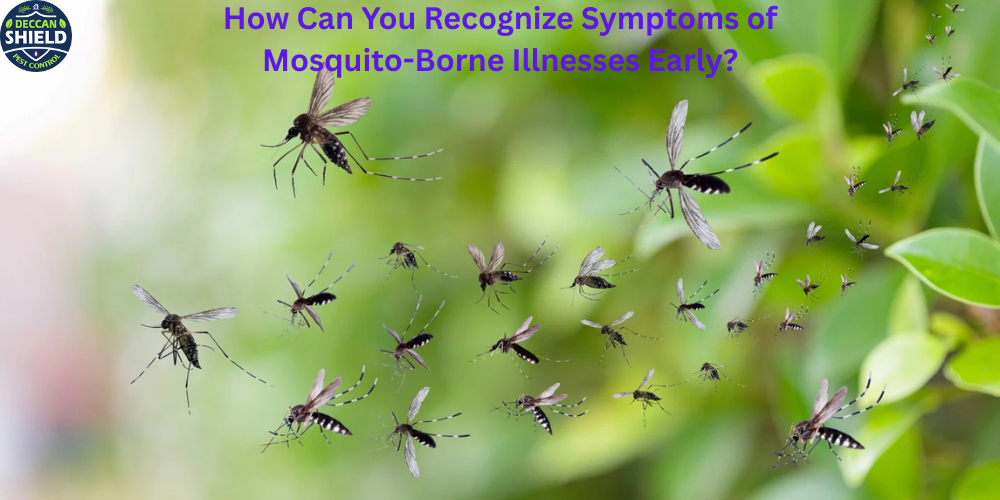What Attracts Cockroaches to Certain Environments or Areas?
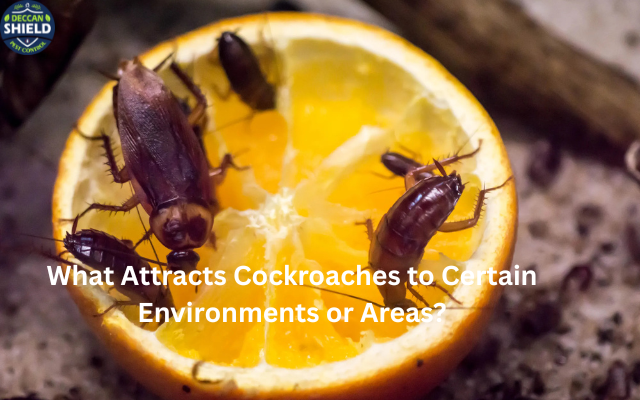
Strong 8k brings an ultra-HD IPTV experience to your living room and your pocket.
Cockroaches are one of the most resilient and adaptable pests known to humankind. From the bustling streets of urban cities to the quiet corners of countryside homes, cockroaches can be found almost everywhere. But have you ever wondered why certain environments or areas seem to attract these unwelcome guests more than others?
Understanding what attracts cockroaches is essential for effective prevention and control. Whether you're a homeowner, renter, or property manager, knowing the conditions that lure cockroaches can help you keep them at bay.
In this blog post, we’ll explore the key factors that attract cockroaches to certain environments and offer practical tips for keeping your property roach-free.
1. Why Cockroach Infestations Happen
Cockroaches are scavengers that have adapted to thrive in human environments. They are not drawn to filth alone—rather, they are attracted to opportunity. If an environment offers food, water, warmth, and shelter, it becomes a prime target for infestation.
While cleanliness does play a major role, even the cleanest homes and businesses can fall victim if certain attractants are present.
2. The Primary Attractants for Cockroaches
2.1 Food Sources
Cockroaches are not picky eaters. They’ll consume anything organic, including:
• Crumbs and food scraps
• Grease or oil residues
• Pet food left out overnight
• Garbage and compost
• Starch-based materials like cardboard and paper
• Even soap and hair in extreme cases
What makes food sources particularly problematic is how easy it is to overlook small particles that accumulate under appliances, inside cabinets, or around garbage bins.
2.2 Water and Moisture
Like all living things, cockroaches need water to survive. They are especially attracted to:
• Leaky pipes and faucets
• Condensation on bathroom or kitchen surfaces
• Pet water bowls
• Wet sponges and dishcloths
• Dripping air conditioners or refrigerators
Even a small water source can sustain an entire colony, which is why damp environments are cockroach hotspots.
2.3 Warmth and Shelter
Cockroaches prefer warm, dark, and secluded areas. Typical hiding spots include:
• Behind or under appliances (like fridges and ovens)
• Inside cabinets or pantry corners
• Cracks and crevices in walls and floors
• Cardboard boxes
• Wall voids and crawl spaces
These areas provide safety from predators and the perfect conditions for laying eggs and breeding.
3. Common Environments That Attract Cockroaches
Understanding where cockroaches thrive can help you proactively prevent infestations. Here are the most common settings they gravitate toward:
3.1 Homes and Apartments
Residences offer abundant food and shelter. High-risk areas include:
• Kitchens (especially unsealed food containers and uncleaned dishes)
• Bathrooms (leaks and damp surfaces)
• Basements and storage rooms (clutter and darkness)
• Garbage bins left uncovered
Shared buildings like apartments are even more vulnerable due to multiple entry points and interconnected spaces.
3.2 Restaurants and Commercial Kitchens
These locations are a paradise for cockroaches, given:
• Constant food preparation and leftovers
• Greasy surfaces and crumbs
• Poorly maintained drains
• Overnight food waste storage
• Lack of regular deep cleaning in hard-to-reach areas
Even a single cockroach sighting can damage a business’s reputation and lead to health code violations.
3.3 Grocery Stores and Warehouses
Cardboard packaging, spilled food items, and large inventories create many potential harborage points. If not cleaned properly, storage rooms become breeding grounds.
3.4 Hospitals and Clinics
Despite high cleanliness standards, cockroaches can infiltrate medical facilities through:
• Laundry areas
• Cafeterias or pantries
• Floor drains
• Utility rooms
The presence of cockroaches in such places raises serious hygiene concerns.
3.5 Sewers and Drains
Cockroaches often originate from sewers, especially American and Oriental species. Drains provide easy access to buildings and contain plenty of moisture and organic matter.
4. Behavioral Traits That Guide Cockroach Movement
Cockroach behavior also plays a role in why they move into certain environments:
• Nocturnal nature: Most cockroach activity occurs at night, which makes them harder to detect initially.
• Pheromone trails: Cockroaches leave chemical signals to guide others to food and water sources.
• High reproduction rates: One female can produce hundreds of offspring, quickly overwhelming an area if left unchecked.
Their adaptability allows them to exploit even minor vulnerabilities in a structure or routine.
5. How Structural Conditions Increase Risk
Certain building features or flaws can make an environment more cockroach-friendly:
• Cracks in walls or floors
• Broken screens on windows or vents
• Improperly sealed doors
• Unventilated crawl spaces or basements
• Poorly maintained trash areas
Older buildings and those without regular pest maintenance are at a higher risk.
6. Environmental and Seasonal Factors
Climate and Temperature
Cockroaches prefer warm climates, which is why infestations are more common in places like Hyderabad, Mumbai, and other tropical regions. In colder climates, they seek indoor shelter during the winter.
Urbanization
Cockroaches thrive in densely populated urban environments where food waste and water are more plentiful.
Seasonal Peaks
While cockroaches are active year-round, their population tends to surge during:
• Monsoon season (increased humidity and shelter seeking)
• Summer months (warmer temperatures boost breeding rates)
7. How to Reduce Cockroach Attraction
Now that you understand what attracts cockroaches, here are actionable steps to make your property less inviting:
Clean Regularly
• Vacuum and mop floors often
• Clean under appliances and behind cabinets
• Wipe down kitchen surfaces and stovetops
• Don’t leave dirty dishes overnight
Eliminate Food Sources
• Store food in sealed containers
• Empty pet food dishes before bed
• Take out the trash daily
• Keep garbage bins sealed and clean
Control Moisture
• Fix leaks immediately
• Use exhaust fans in bathrooms and kitchens
• Wipe up condensation and spills promptly
Seal Entry Points
• Caulk cracks and crevices
• Install door sweeps
• Repair torn window screens
Declutter
• Avoid excessive cardboard and paper storage
• Organize storage areas to reduce hiding places
8. When to Call Professional Cockroach Control Services
DIY measures may help for minor issues, but established infestations often require professional treatment. Signs you need expert help include:
• Seeing cockroaches during the day (a sign of overcrowding)
• Finding egg cases or droppings
• Repeated sightings despite cleaning
• Strong, musty odor in infested areas
Professional cockroach control services use a combination of baiting, insecticidal sprays, and monitoring to eliminate infestations safely and effectively.
9. Conclusion: Keep Cockroaches Away Before They Move In
Cockroaches aren’t just an annoyance—they’re a health risk. They carry bacteria, contaminate food, and can even trigger allergies and asthma. By understanding what attracts them and implementing preventive measures, you can significantly reduce your chances of dealing with an infestation.
Whether you live in a high-rise apartment, run a bustling restaurant, or manage a warehouse, vigilance is key. And if things ever get out of hand, don’t hesitate to call in the professionals for thorough and lasting cockroach control.
Note: IndiBlogHub features both user-submitted and editorial content. We do not verify third-party contributions. Read our Disclaimer and Privacy Policyfor details.



